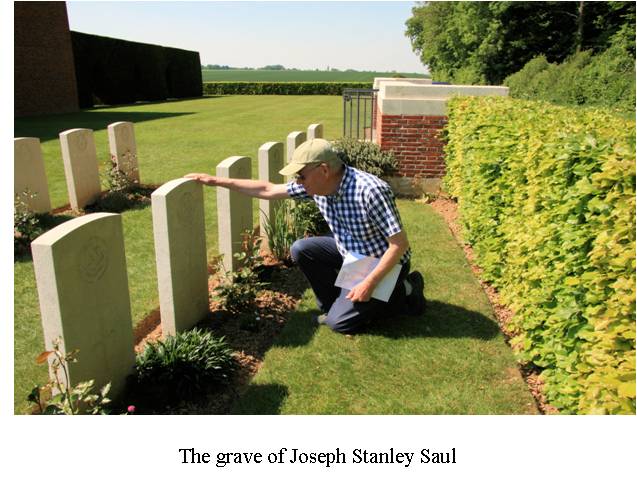

A TOUR OF THE SOMME BATTLE FIELDS
By John Saul
This article was originally published in the December 2011 edition of Soul Search, the journal of The Sole Society
I was pleased that Diana Kennedy was able to provide details in the August 2011 Soul Search of the ancestry of Major W.T.Sewell, whose grave I chanced upon while on a visit to the Somme battlefields in May 2011.
The principal reason we were in France was to visit the grave of my wife’s great-uncle Sgt. Harold Peach in Hebuterne Military Cemetery. Harold was born and raised in Blackpool, and we have been unable to discover why he enlisted in the London Scottish, a Territorial Battalion which was supposed to have been founded exclusively for Londoners with Scottish connections, of which he had none.
The London Scottish was part of the 56th Division, which was in the front line at Hebuterne on 1st July 1916 and went ‘over the top’ at 7.20am, its target the German salient at Gommecourt. They never reached it. Of the 856 London Scottish who attacked that morning, just 200 were fit to march back into reserve the next day. The Battalion, reinforced by recruits and recovered wounded, plus the 100 fit men who had remained in the trenches ‘to provide a nucleus for recovery’, returned to the line at Hebuterne on 10th July, and Harold Peach died on the 12th.
The chance discovery of Major Sewell’s grave came about because my wife was born and brought up in Northern Ireland and we wanted to visit the Ulster Memorial, which is located at the point on the Somme battlefield where the 36th (Ulster) Division suffered appalling losses on the 1st July. This memorial takes the form of a replica of ‘Helen’s Tower’, a building on the Clandeboye Estate near Bangor, Co. Down, where the Ulster Division was trained for battle. Major Sewell’s Royal Inniskilling Fusiliers were part of that Division, and a stone in the grounds of the Ulster Memorial records the names of four Inniskillings who won the VC.
Major Sewell’s grave is in Mill Road Cemetery, which is located close to the Ulster Memorial in the middle of a wheat field, and within sight of the great Lutyens-designed memorial to the missing at Thiepval.
We ended a fascinating but salutary day by driving further south to visit the grave of Private Joseph Stanley Saul, a 3rd cousin of my grandfather, in the London Cemetery and Extension, Longueval. He was born in Twickenham in 1892, the son of Arthur Thomas Saul, an Ostler and Horsekeeper, and Harriett Gutheridge. Joseph Saul was a Baker in 1911. He enlisted as a Private in the 20th County of London Battalion, London Regiment and was killed in action on 16 Sep 1916. Unfortunately Joseph’s gravestone, most unusually for a Commonwealth War Grave, is quite badly eroded and did not photograph well, so all I can provide is a photograph of me studying it! n
